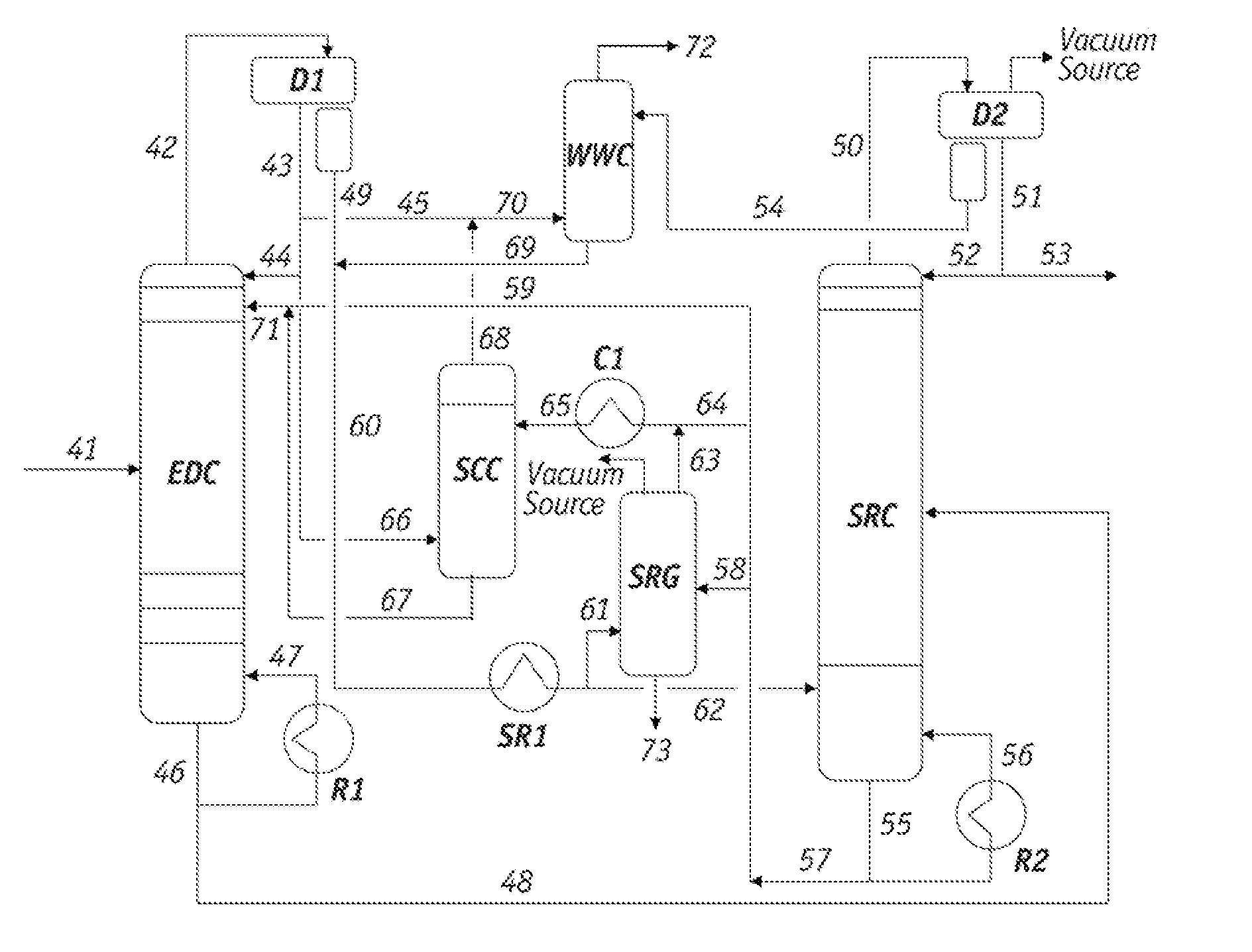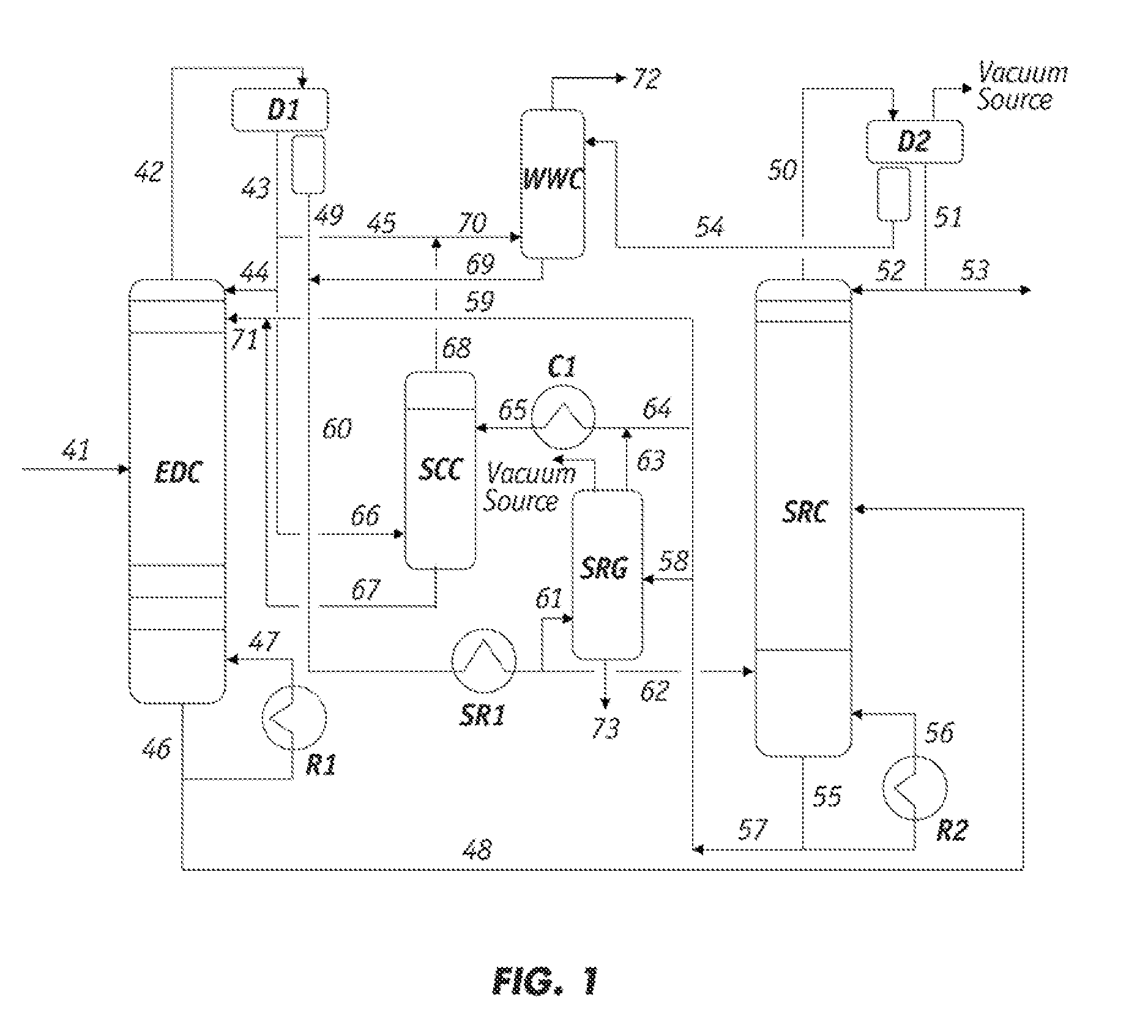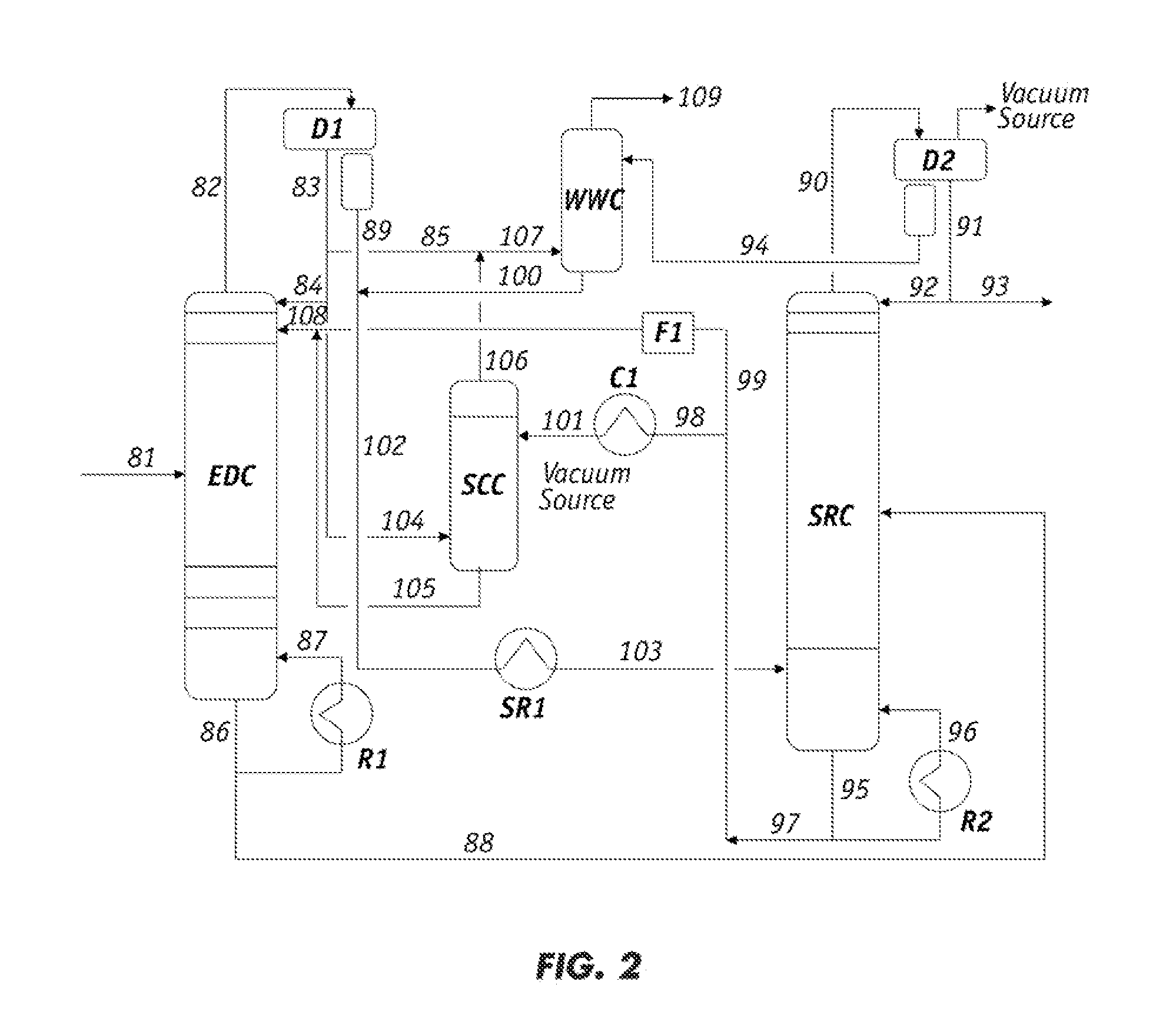Methods for regeneration of solvents for extractive processes
a technology of solvents and extractive processes, applied in the field of solvent regeneration methods, can solve the problems of process inoperableness, deterioration of solvent performance, and increase of heavy hydrocarbons in the feed stream, so as to improve solvent performance and reduce the amount of (or save process energy)
- Summary
- Abstract
- Description
- Claims
- Application Information
AI Technical Summary
Benefits of technology
Problems solved by technology
Method used
Image
Examples
example 1
[0074]A sample of the raffinate from the overhead stream of the EDC, which corresponds to line 66 in FIG. 1, was withdrawn and analyzed. The Paraffinic Olefinic Napthenic and Aromatic (PONA) analysis of the sample is summarized as follows.
[0075]
TABLE 1Analysis of ED Raffinate Reportedby Group Type and Carbon Number(Wt %)n-i-Ole-Naph-ParaffinsParaffinsfinsthenesAromaticsTotalC51.000.890.02001.91C615.6324.900.1719.230.65 (Benzene)60.58C74.2915.710.068.33028.39C81.272.070.162.2905.79C90.301.140.010.2201.67C1000.020000.02Total Unknown Hydrocarbons1.53Heavy Hydrocarbons0.11Total100.00
[0076]The data in Table 1 demonstrate that the major components in the EDC raffinate were the less polar hydrocarbons in the C6-C7 range and the minor components were in the C8-C9 range.
[0077]Lean solvent containing sulfolane from line 65 in FIG. 1 was also tested and found to comprise 1.4 wt % of the heavy hydrocarbons and polymeric materials. The PONA analysis of this solvent sample is summarized in the fo...
example 2
[0080]Samples of lean solvent were mixed with samples of raffinate (the displacement agent) under different raffinate-to-solvent weight ratios (R / S), to measure the capability of the displacement agent in removing the heavy hydrocarbons and polymeric materials from the solvent. The solvent and raffinate samples had the same compositional makeup as those of Example 1. Solvent and raffinate were thoroughly mixed in a vessel at room temperature by rigorous shaken. The hydrocarbon phase and the solvent phase were allowed to separate for 30 minutes, although clear phase separation was observed immediately once the shaken stopped. Results of the laboratory extraction tests are summarized in Table 3.
[0081]
TABLE 3Mass Balance of the Laboratory Extraction (displacement) TestBefore Displacement TestAfter Displacement TestSolventRaffinateSolventHydrocarbonR / SFeed (g)Feed (g)Phase (g)Phase (g)1.0100.0100.099.5100.52.0100.0200.099.1200.63.0100.0300.198.3301.7
[0082]The data in Table 3 show that t...
example 3
[0083]To confirm the conclusions derived from the results in Example 2, lean solvent samples before and after contacting the raffinate (which corresponds to the lean solvent feed and the solvent phase after raffinate contact), under a R / S of 3.0, were analyzed by GC / MS. Chromatograms of both solvent samples were also obtained. The chromatogram of the lean solvent sample prior to contact with the raffinate showed the sulfolane peak as the major component in the solvent appears in 21 through 23 minutes (marked at 22.1 minutes) in the GC elusion time. Several important heavy hydrocarbon components having boiling points lower than that of sulfolane appeared at 12.5, 12.9, 13.9, 16.2, 16.4, 17.0, 18.5 and 20.2 minutes in elusion time, while those having boiling points higher than sulfolane appear from 23 to 31 minutes in elusion time.
[0084]After contacting the lean solvent with the raffinate (the displacement agent), these heavy hydrocarbon peaks were substantially disappeared in the sol...
PUM
| Property | Measurement | Unit |
|---|---|---|
| boiling points | aaaaa | aaaaa |
| pressure | aaaaa | aaaaa |
| pressure | aaaaa | aaaaa |
Abstract
Description
Claims
Application Information
 Login to View More
Login to View More - R&D
- Intellectual Property
- Life Sciences
- Materials
- Tech Scout
- Unparalleled Data Quality
- Higher Quality Content
- 60% Fewer Hallucinations
Browse by: Latest US Patents, China's latest patents, Technical Efficacy Thesaurus, Application Domain, Technology Topic, Popular Technical Reports.
© 2025 PatSnap. All rights reserved.Legal|Privacy policy|Modern Slavery Act Transparency Statement|Sitemap|About US| Contact US: help@patsnap.com



